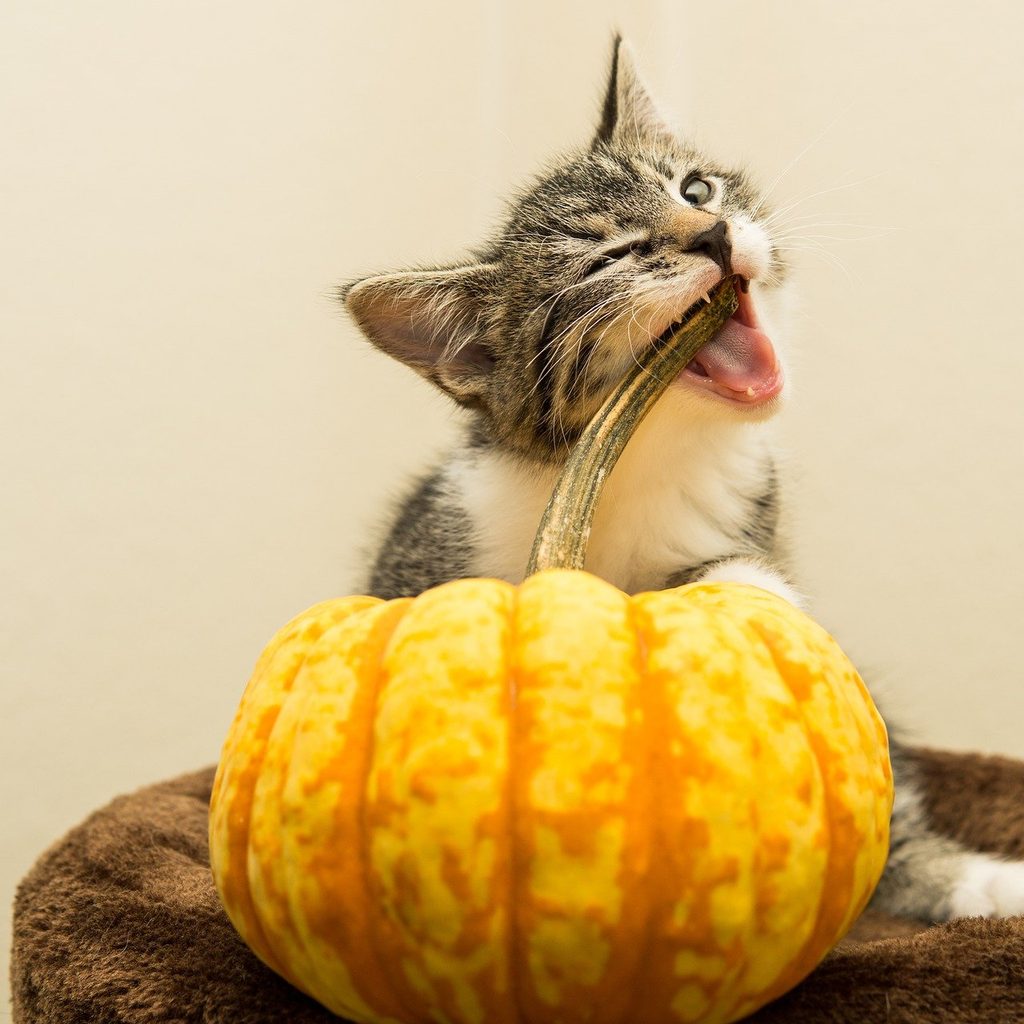Pumpkin is delicious and full of nutrients that make it a great food for humans — but can cats eat pumpkin? Absolutely. Adding some pumpkin to your cat’s food has many important benefits, and your vet might even recommend you use pumpkin to help relieve certain digestive issues. Is pumpkin toxic to cats? Not at all! In fact, it’s a great food that most cats can eat without any issue. As long as you carefully select the pumpkin that you feed and gradually introduce it to him, giving pumpkin to your cat can result in many important health benefits.
Pumpkin is rich in fiber
One of the top perks of pumpkin is that it’s rich in fiber, and that has multiple health benefits for your kitty. Pumpkin’s high fiber content can complement your cat’s diet, or you might add pumpkin to your cat’s food when your kitty is having certain health issues.
If your cat is constipated, feeding more fiber can help get things moving again. The fiber in pumpkin can help regulate your cat’s digestive system, getting him back to normal and helping him feel more comfortable again. (While it’s great to be able to relieve your cat’s constipation at home, call your vet if the problem doesn’t quickly resolve or if your cat gets increasingly uncomfortable.)
Fiber can also be useful in treating diarrhea. The fiber in pumpkin can help absorb moisture, returning your cat’s bowel movements to a more normal consistency.

Pumpkin can help your cat feel full
All that fiber in pumpkin makes your cat’s food more bulky, and that means he feels fuller after he eats. This can be helpful for an overweight cat who needs to lose weight. Adding some pumpkin to your cat’s meal means he gets plenty of nutrition but can help satisfy your cat’s appetite so he doesn’t feel the need to overeat or beg after his meal.
Pumpkin is full of good stuff
Pumpkin is full of nutrients that are good for cats, too. It contains vitamins A and C, which together support your cat’s immune system. There’s also zinc in pumpkins, and that promotes a healthy coat and skin. Pumpkin is a nutritious food that makes a great meal topper or supplement to your cat’s diet.

Tips for feeding your cat pumpkin
It’s pretty easy to feed your cat pumpkin.
- To start, make sure to buy plain canned pumpkin without any added sugars or spices, like you’d find in pumpkin pie filling. You might be wondering if you can feed bits of whole pumpkin to your cat. This usually isn’t the most convenient way to give pumpkin, and it’s important not to feed elements like the skin or pulp. Chances are, most of the pumpkin will go bad before you can feed the whole thing, so it’s usually best to stick to canned pumpkin. Always refrigerate the leftover pumpkin between feedings.
- You can add pumpkin right on top of your cat’s food, and most cats find pumpkin pretty tasty. It’s best to introduce pumpkin slowly, adding just a teaspoon or two. As your cat gets used to the pumpkin, you may be able to add a little more. Definitely consult with your vet before making dietary changes, and only change your cat’s diet gradually to avoid digestive upset.
- If your cat goes wild for pumpkin and you end up feeding a bit too much of it, he might experience some diarrhea. If this occurs, it’s best to skip feeding him pumpkin for a few meals until your kitty’s tummy returns to normal.
Adding pumpkin to your cat’s food can be beneficial in many situations. It can help relieve digestive upset and address constipation. It’s also a highly nutritious food, and it might even be a helpful additive to meals for cats who need to lose a little weight. While pumpkin tends to be a relatively safe food, it’s always a good idea to discuss any diet changes with your vet before you make them. Your vet can recommend an appropriate amount of pumpkin to give to your cat and can confirm that your fur baby doesn’t have any underlying health issues that might make feeding pumpkin a bad idea.


